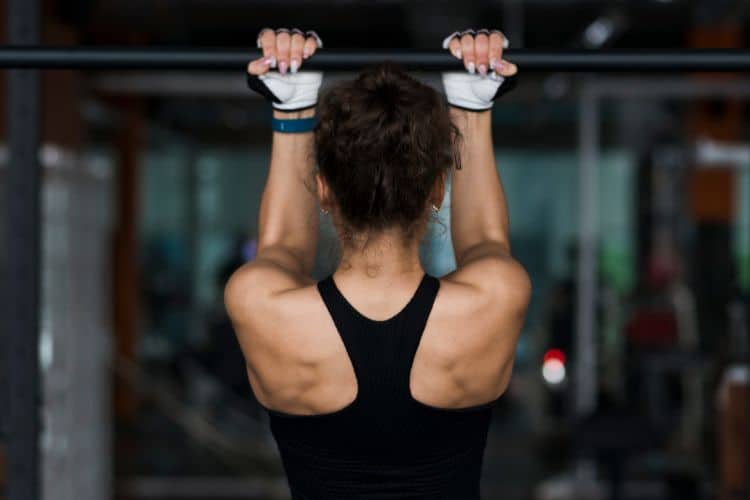Sign up for workout ideas, training advice, reviews of the latest gear and more.






Looking to sculpt powerful shoulders and boost upper-body strength in just 30 minutes? A pull-up shoulder workout is a game-changer. Combining pull-ups with shoulder-specific movements not only enhances muscular development but also improves posture, functional strength, and upper-body symmetry. Whether you’re training at home or in the gym, this targeted routine delivers maximum results in minimal time.
In this blog post, we’ll explore an effective 30-minute pull-up shoulder workout, benefits of pull-ups for shoulder strength, variations to add variety, and tips for progression. Perfect for athletes, fitness enthusiasts, or anyone ready to take their upper body training to the next level.
Pull-ups are a compound movement that primarily targets the latissimus dorsi, but also heavily engages the rear deltoids, trapezius, biceps, and core. They are essential for building real-world pulling strength and upper-body muscularity.
The shoulder is a complex joint made up of three main heads:
Incorporating shoulder exercises ensures balanced development, reducing the risk of injury and enhancing performance in pushing, pulling, and lifting movements.
This 30-minute pull-up and shoulder workout alternates between compound and isolation exercises, optimizing both hypertrophy and strength. Perform this circuit-style workout 2–3 times per week with at least 48 hours between sessions.
Before diving into pull-ups and shoulder exercises, warm up the upper body to prevent injury and enhance performance.
Muscles Worked: Lats, rear delts, biceps, traps
Grab the pull-up bar with an overhand grip, hands shoulder-width apart. Pull your chest toward the bar, squeeze your back and shoulders at the top, then lower under control.
Modification: Use resistance bands or assisted pull-up machine if needed.
Progression: Add a weighted vest or use a slow tempo for time under tension.
Muscles Worked: Shoulders (primarily anterior and lateral delts), triceps
Start in a downward dog-like position with hips elevated. Lower your head toward the ground, keeping elbows flared slightly, then push back up.
Progression: Elevate your feet to increase resistance and simulate a handstand push-up.
Muscles Worked: Upper lats, traps, rear delts
Take a grip wider than shoulder-width and pull your body up until your chin passes the bar. Emphasize shoulder and back contraction at the top.
Pro Tip: Keep your chest open and elbows out to hit the upper back and rear delts harder.
Muscles Worked: Front and side deltoids, traps
Sit or stand holding dumbbells at shoulder level. Press them overhead while keeping your core tight. Slowly lower back to starting position.
Variation: Try Arnold Press to hit all three heads of the shoulder in one move.
Muscles Worked: Rear delts, lats, biceps, core
Hold your body at the top of the pull-up position or slowly lower yourself from the top down for 5 seconds.
Benefit: Builds isometric strength and endurance in the shoulder girdle.
Muscles Worked: Lateral deltoids
Hold dumbbells at your sides, raise arms outward until shoulder height, then slowly lower. Focus on strict form for max shoulder activation.
Tip: Don’t use momentum—keep it slow and controlled to fully engage the side delts.
Muscles Worked: Rear delts, traps, rotator cuff
Use a resistance band or cable machine. Pull the rope or handles toward your face, flaring elbows out. Pause briefly, then return.
Why it matters: Strengthens often-neglected rear delts and improves shoulder stability.
Stretching post-workout aids recovery, improves mobility, and helps prevent soreness.
This workout combines bodyweight and resistance exercises to work multiple upper-body muscles in one session—ideal for busy schedules.
Pull-ups build real-world strength useful in climbing, lifting, and athletic activities. Shoulder work supports posture and overhead movement.
By targeting all three deltoid heads, you avoid muscular imbalances and reduce the risk of shoulder injuries.
Sculpted shoulders paired with a wide back create the classic V-taper physique.
Whether you’re a beginner using bands or an advanced athlete doing weighted pull-ups, this routine is easily adjustable.
To keep your muscles adapting and prevent plateaus, rotate in these pull-up variations:
Underhand grip emphasizes biceps and anterior deltoid.
A unilateral variation that builds strength on each side.
Grip a towel draped over the bar—great for grip strength and shoulder engagement.
Side-to-side variation that builds shoulder mobility and core rotation.
If you want to extend your session or add volume to a split routine, include:
To incorporate this 30-minute workout into your weekly schedule:
| Day | Workout |
|---|---|
| Monday | 30-Min Pull-Up Shoulder Workout |
| Wednesday | Full Body or Leg Day |
| Friday | 30-Min Pull-Up Shoulder Workout |
| Sunday | Core + Mobility or Active Recovery |
A 30-minute pull-up shoulder workout is a powerhouse routine to sculpt strong, defined shoulders while improving overall upper-body strength. By combining the foundational movement of pull-ups with targeted shoulder exercises, you can transform your physique, boost performance, and feel more confident in your body.
Whether you’re training in the gym or at home with a pull-up bar and dumbbells, consistency and proper form are key. Stick to this plan, track your progress, and enjoy the rewards of stronger shoulders and a more powerful upper body.
Want more workout and video guide?
Follow us on Pinterest, Facebook, and Subscribe to our Newsletter and Stay tuned for FREE downloads of our App coming soon!
Stay up to date on the latest women’s health, fitness and lifestyle trends and tips.